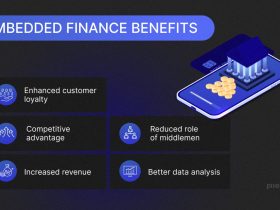Development in technology means inevitable changes and this includes banking just as much. With the introduction of digital banking, so many systems and processes have changed. This also resulted in losing human touches in banking, unlike any other time in our history.
Digital banking is rapidly rising and creating many trends as it does so. There are two types of banks, one that has a station and one that is done online completely. But despite the differences, both types of banks indeed provide digital services, from opening an account online, to mobile banking with various apps and transactions done online in many ways.
One thing is certain, many prefer digital banking. A study done by the American Bankers Association (ABA) shows that 70% of people find digital banking more convenient while 97% agree that mobile and online banking experiences are excellent. Another study done by the American Bankers Association shows that 71% prefer digital banking and managing their accounts online is much more convenient.
But this does not mean the importance of branch banking is gone. Although fewer, according to JD Power 38% prefer branch banking and think that it is essential to have a traditional way of banking.
Human Touch in Digital Banking
Although digital banking is much more convenient and many prefer this, it does not mean that they are satisfied with only the work of a computer. The specific feature of human touch in any field cannot be replaced and is yearned for even in fintech.
Maintaining the balance between digitalization and the human element in banking is key. As, a study done by Foolproof shows that 46% of people prefer human interaction while 26% believe that having a branch in the streets is essential. This study also finds that 47% feel that the computer-generated chatbox provided is not enough and does not satisfy their questions. Additionally, 74% feel that with digital banking rapidly developing, banking is no longer as personal as they want it to be.
This study and other data clearly show that when banking is done only with AI-generated methods, it makes them lose that emotional touch that people search for while at the same time, it also makes their customers frustrated when their problems are to be solved by an already programmed AI with limited resources.
Thus, a human touch is a necessity in banking.
Trends Which Shape Customer Experience
/Imagine Bringing a Human Touch to Digital Banking
Now, we have already learned that the human touch is necessary for digital marketing to satisfy customers. Here are some of the trends which shape customers’ experience.
Personification
Also, the system may be changing rapidly, but the basics remain the same which is in order to get customers a certain bond has to be built, and a bank has to earn the trust of their customers. To do this, a human who has emotion is needed.
Although they do their banking online, and may even be opening their account remotely, what attracts them to a certain bank is their policy, their promises, and their solid foundation. To market a bank and to advertise its policy, a person needs to study society, and what it needs, it needs to know its rivals and go on from there.
Not only this, but to get the trust of a customer a bank cannot merely be a computer rather it has to be a person whom they can trust and understand. Thus, personification is a key point and a trend that has worked for many banks around the world.
Understanding Data
A bank is one institution that has the personal information of its customers. Making good use of this information will bring many clients and demands for the services of the bank. For instance, a bank knows when someone is unable to pay certain bills, and at such time they can suggest loans to their customer.
When a new joint account is opened by a newlywed, a housing loan or insurance or even different types of savings can be suggested by studying their income.
However, this information will be useful only when a person thoroughly studies the data and uses it carefully and in the bank’s best interest. Otherwise, it is just a bulk of information stored with no use.
Customer service
When customers run into different problems, some of them can be solved with AI-generated questions and answers and this is very useful as well. This kind of application should be thoroughly developed and should be made sure that no problem occurs while using it.
But when problems occur and such services cannot solve them, the bank should have customer service either on calls or messages 24/7 to assist the customer. Many people prefer this method, while at the same time, human assistance solves more queries and gives more assurance, thus, this builds the experiences of the customer positively.
Branch Banking
The many advantages of having a branch are that, firstly you are providing a service that not all banks are able to provide.
Secondly, when people are trying to make huge transactions or deposits, many of them prefer to go to the bank themselves and interact with the employees. At the same, when people have urgent and critical problems, rather than waiting for calls or messages they walk in the branch themselves and try to solve the problems.
Basically, when individuals are desperate we search for human interaction, or when something is very important we tend to search for interaction to build trust and get an emotional bond that we crave. Thus, at such an hour human touch is once again needed.
Conclusion
The basis of banking is to gain the loyalty and trust of the customer. In such a competitive world, mainly in fintech where all the services one bank provides are also available at others and changing banks is just as easy and convenient. One thing that should be certain, that is customer experience is vital. Thus, banks should strive to make it as positive as possible.
One way to do this is by blending the digital and human touch together to create the perfect balance of convenience and humanity. To conclude, the human touch is a necessity in digital banking.








Leave a Reply